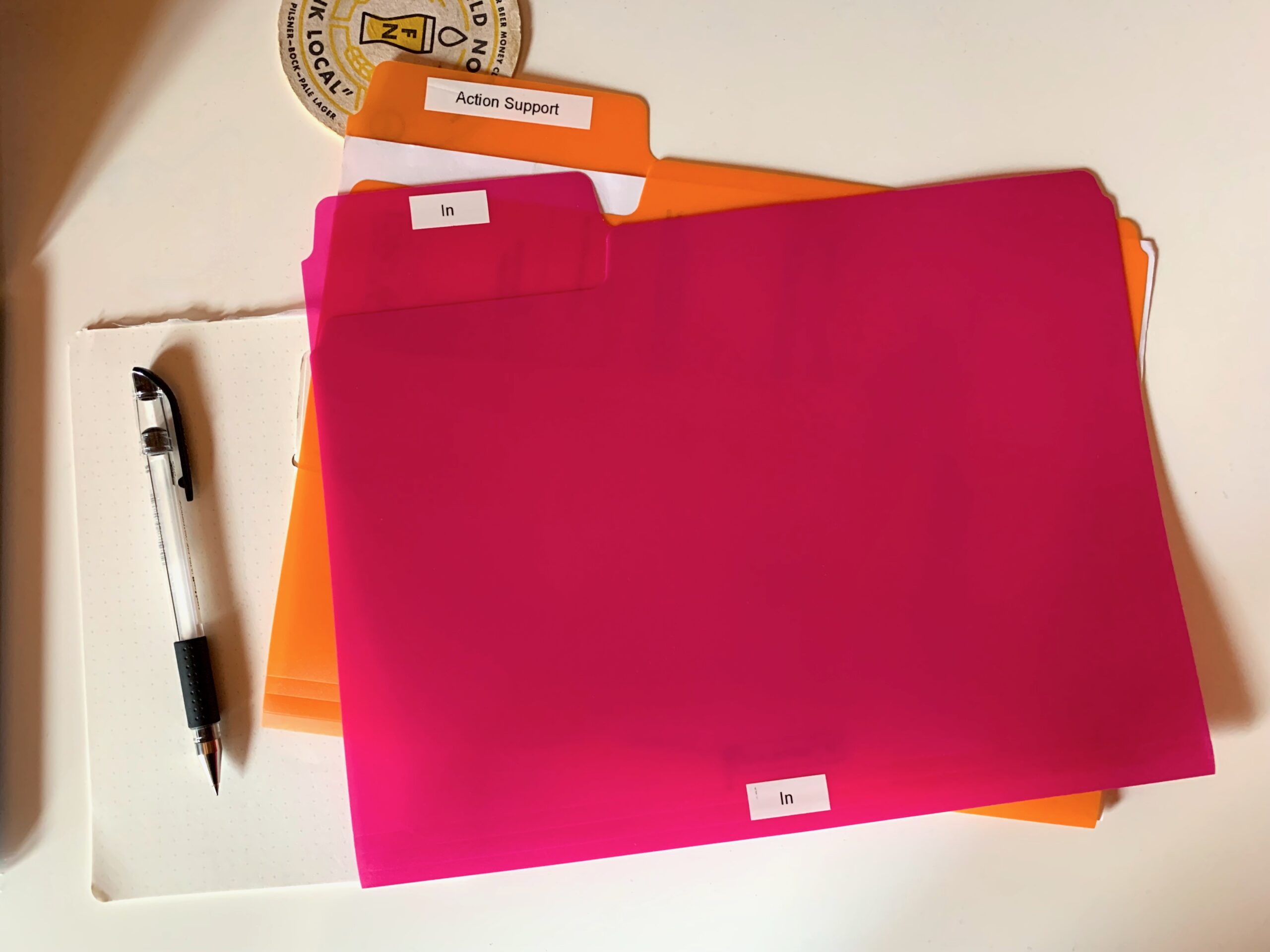I watched a video from Cal Newport on how he uses a simple text file for the sense-making of a bunch of new information. He mentioned that instead of processing his emails one by one, he captures the essence of every email into his text file, then starts to categorize it, organize it by projects, etc. This gave me an idea about solving a similar problem I had with my GTD inbox for a while now.
GTD recommends that we process our stuff in the inbox sequentially, without grouping beforehand. The problem with this approach is that many items related to different projects are scattered in our inbox, so we’re jumping in and out of projects while processing our inbox. This constant context switching drains energy from our brain.
If we want to spare our attention, it is a good idea to group our unprocessed inbox items by project, so we can reduce the context switching when we process them. Using this approach for the GTD Process and Organize steps will ensure that we clean things related to each project in one go, not randomly.
I will show you how to do this inside OmniFocus, but you can also steal this approach for Things using a similar “Process” tag.
Why is this a problem?
The point is to add a temporary structure to information in the inbox. I usually do some form of project planning and next action creation when I’m emptying my inbox. The problem is that I constantly switch thoughts about many different things as I go through each item. It would be nice to have them batched and grouped by their project. This can reduce the attention switching to different topics/projects.
Let’s say we have an inbox like this:
- Item 1 (could be about Project X)
- Item 2 (could be about Project Y)
- Item 3 (could be about Project Z)
- Item 4 (could be about Project X) ← This is where I will have to return to “Project X” again. This item can even be connected to “Item 1” somehow.
I hate when I have to switch my current context (not my GTD context, but the current mindset that I’m in) and go back to a project I already thought about and assigned a next action to; possibly, I even closed its support material since then.
Having new information pre-organized by projects (or topics) can reduce the load of thinking about a project twice or more in an inbox processing session.
Using the Process workflow

- The first step is to create a new perspective in OmniFocus called Process with the rules shown on the screenshot above. You’ll use this perspective to process things instead of the standard OmniFocus Inbox.
- It’s essential to have everything corralled into the OmniFocus Inbox, so you can stop jumping around different inboxes, but more importantly, have everything pre-organized by the project. Go through your inboxes (email, Slack, DEVONthink, etc.) and link a new action to all unprocessed items in OmniFocus. The Hook app can help a lot with this step.
- Open the Process perspective, where you’ll see your unorganized stuff sitting in the Inbox waiting to be pre-organized. You must quickly go through each item and assign it to an existing or new project (don’t assign tags). You don’t have to come up with the final name for a new project. Set whatever comes to your mind; the important thing is to pre-organize unprocessed items in this step. If you don’t know where to assign it, just skip it, or move it into a singular action list related to an area.
- When you have pre-organized everything, you can click the clean-up button (or press Command-K) to see all of your unprocessed items grouped by project. Now you can go through each item and deal with them in the context of its project instead of having them all over the place.
Why having a pre-organized inbox is better than a flat list of unknown stuff
I always get annoyed when I deal with something related to a big project in my inbox, and then 5 minutes later, another thing pops into my view about the same subject. I have to open the project and its support material again, get into the same mindset, and maybe even reconsider everything I figured out 5 minutes ago. It is a dumb way to plan things.
I’ve been pre-organizing inbox actions by the project for about a month now, and I can assure you that having unprocessed stuff grouped by the project can make a big difference. I can process my OmniFocus Inbox about 15-20% faster than before, but more importantly, I don’t feel tired after doing it. I stopped switching contexts for every item; instead, I’m spending more time at the project level and dealing with new things from this perspective.
I wrote a follow-up post to this one answering reader questions about this workflow.


